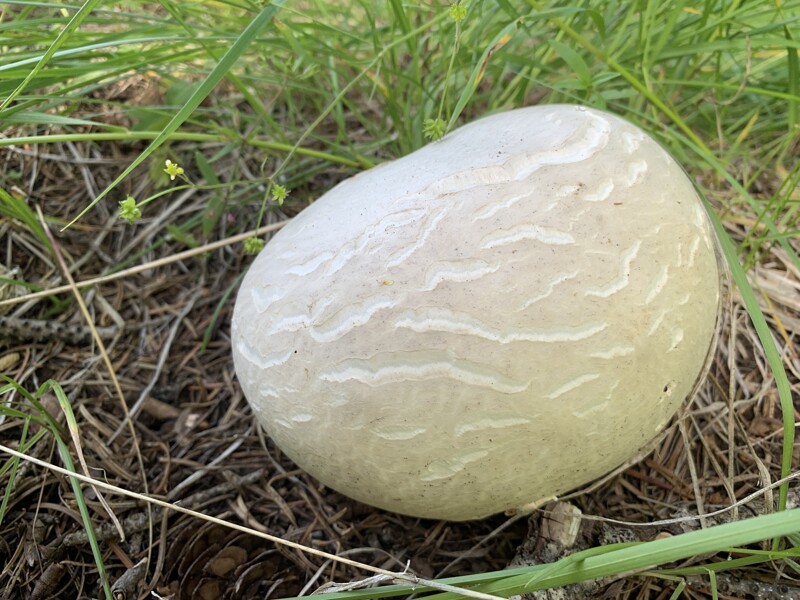Substrate: fields, pastures, open woods, cemeteries, on exposed hillsides, along roads, in drainage ditches, etc.
Conservation Status: Not of concern
Edibility: Edible when the flesh is firm and white.
Edible when the flesh is firm and white.
Fruiting Body: softball- basketball-sized (8-60 cm in diameter), round or sometimes lobed or occasionally somewhat flattened on top in age. outer layer of peridium thick when young (2-4 mm), at first smooth (with texture of kid glove) and pure white or brownish-stained, then cracking up into flat scales or plates which eventually flake off to expose the thin olive-brown inner layer - which soon disintegrates - or both layers falling off together. Sterile bases: absent or rudimentary, but a cordlike "root" often present. Spore mass: at first white and firm or cheesy, becoming greenish-yellow and mushy with an unpleasant odor (like urine), finally deep olive-brown to brown and powdery.
Sources: Arora, David. Mushrooms Demystified. Berkeley, Ten Speed Press, 1986.
PNW Herbaria: Specimen records of Calvatia gigantea in the Consortium of Pacific Northwest Herbaria database
CalPhotos: Calvatia gigantea photos



